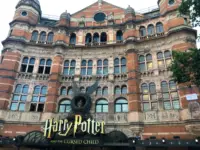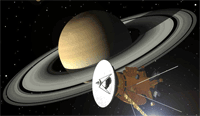
The Magical Threads: Exploring the Surprising Similarities Between “Lord of the Rings” and “Harry Potter”
Introduction
“Lord of the Rings,” J.R.R. Tolkien’s epic fantasy, and “Harry Potter,” J.K. Rowling’s magical saga, stand as two of the most beloved and enduring fantasy series in literature. While they possess distinct worlds and narratives, there are intriguing parallels that connect them. In this 1500-word exploration, we will delve into the shared themes, character archetypes, and narrative elements that bridge Middle-earth and the wizarding world, revealing the magical threads that unite these iconic series.
1. The Hero’s Journey
Lord of the Rings: Frodo’s journey to destroy the One Ring mirrors the classic hero’s journey archetype, complete with challenges, allies, and a final confrontation.
Harry Potter: Harry’s transformation from an ordinary boy to a hero who faces dark forces follows a similar hero’s journey structure.
2. The Mentor Figure
Lord of the Rings: Gandalf serves as a mentor to Frodo and other members of the Fellowship, providing guidance and wisdom.
Harry Potter: Albus Dumbledore plays a similar role as Harry’s mentor, offering guidance and crucial advice throughout the series.
3. The Importance of Friendship
Lord of the Rings: The bonds of friendship and camaraderie among the members of the Fellowship are central to the story’s heart.
Harry Potter: The power of friendship is a recurring theme, particularly Harry’s close relationship with Ron and Hermione.
4. The Battle Between Good and Evil
Lord of the Rings: The central conflict revolves around the struggle between good (represented by the Free Peoples) and evil (embodied by Sauron and his servants).
Harry Potter: The moral struggle between good (represented by Hogwarts) and evil (represented by Voldemort and his Death Eaters) forms the core of the series.
5. The Dark Lord
Lord of the Rings: Sauron, the Dark Lord, is the primary antagonist, seeking to reclaim the One Ring and dominate Middle-earth.
Harry Potter: Voldemort, the Dark Lord, is the central antagonist, aiming to conquer the wizarding world and vanquish Harry.
6. Magical Creatures and Races
Lord of the Rings: Middle-earth is populated by a wide array of magical creatures and races, including hobbits, elves, dwarves, and Ents.
Harry Potter: The wizarding world features its own magical creatures, from hippogriffs to house-elves, and various magical races, including wizards, witches, and giants.
7. The Quest for Powerful Artifacts
Lord of the Rings: The quest to destroy the One Ring is central to the story, highlighting the importance of powerful artifacts.
Harry Potter: Horcruxes, objects containing parts of Voldemort’s soul, play a similar role as powerful artifacts, leading to quests and battles.
8. Themes of Sacrifice and Redemption
Lord of the Rings: Characters like Frodo and Sam make immense sacrifices for the greater good, emphasizing themes of heroism and redemption.
Harry Potter: Sacrifice is a recurring theme, with characters like Snape and Harry himself making significant sacrifices for the wizarding world.
9. The Importance of Prophecy
Lord of the Rings: Prophecy is less central in Tolkien’s world, but elements of fate and destiny play a role in characters’ journeys.
Harry Potter: Prophecies are a significant narrative element, including the prophecy about Harry and Voldemort’s final battle.
10. Coming-of-Age Journeys
Lord of the Rings: Characters like Frodo and Sam undergo significant personal growth and transformation during their quests.
Harry Potter: The series follows Harry, Ron, and Hermione as they mature from children to young adults, facing challenges and making choices along the way.
Here’s a comparison table highlighting the similarities between “Lord of the Rings” and “Harry Potter”:
| “Lord of the Rings” | “Harry Potter” | |
| The Hero’s Journey | Frodo’s journey to destroy the One Ring follows the hero’s journey archetype. | Harry’s transformation from an ordinary boy to a hero mirrors the hero’s journey structure. |
| The Mentor Figure | Gandalf serves as a mentor to Frodo and others, providing guidance and wisdom. | Albus Dumbledore plays a similar role as Harry’s mentor, offering crucial advice. |
| The Importance of Friendship | The bonds of friendship within the Fellowship are central to the story. | The power of friendship, particularly Harry’s relationship with Ron and Hermione, is a recurring theme. |
| The Battle Between Good and Evil | The central conflict revolves around the struggle between good (Free Peoples) and evil (Sauron and his forces). | The moral struggle between good (Hogwarts) and evil (Voldemort and Death Eaters) forms the core of the series. |
| The Dark Lord | Sauron, the Dark Lord, seeks to reclaim the One Ring and dominate Middle-earth. | Voldemort, the Dark Lord, aims to conquer the wizarding world and defeat Harry. |
| Magical Creatures and Races | Middle-earth features a wide array of magical creatures and races, including hobbits, elves, and dwarves. | The wizarding world includes magical creatures like hippogriffs and various magical races, such as wizards and witches. |
| The Quest for Powerful Artifacts | The quest to destroy the One Ring is central, emphasizing the importance of powerful artifacts. | Horcruxes, objects containing parts of Voldemort’s soul, play a similar role as powerful artifacts. |
| Themes of Sacrifice and Redemption | Characters like Frodo and Sam make significant sacrifices for the greater good. | Sacrifice is a recurring theme, with characters like Snape and Harry making significant sacrifices. |
| The Importance of Prophecy | Prophecy elements are present, emphasizing fate and destiny in characters’ journeys. | Prophecies, including the one about Harry and Voldemort’s final battle, are significant. |
| Coming-of-Age Journeys | Characters like Frodo and Sam undergo personal growth and transformation. | The series follows Harry, Ron, and Hermione as they mature from children to young adults. |
These similarities underscore the universal themes and storytelling elements that unite “Lord of the Rings” and “Harry Potter,” despite their different settings and worlds. Both series continue to enchant readers with their tales of heroism, friendship, and the battle between good and evil.
Conclusion
“Lord of the Rings” and “Harry Potter” may transport readers to different realms—Middle-earth and the wizarding world, respectively—but their shared themes, character arcs, and storytelling elements reveal the universal power of fantasy literature. These parallels serve as a testament to the enduring appeal of classic heroism, the battle between good and evil, and the magic of friendship and sacrifice. Whether you find yourself immersed in the epic landscapes of Middle-earth or wandering the halls of Hogwarts, these series continue to inspire readers of all ages.
Frequently Asked Questions (FAQ) About the Similarities Between “Lord of the Rings” and “Harry Potter”
1. Are “Lord of the Rings” and “Harry Potter” connected in any way or inspired by each other?
- No, “Lord of the Rings” and “Harry Potter” are not directly connected or inspired by each other. They are independent works of fantasy literature created by different authors.
2. What are some other similarities between the two series that weren’t mentioned in the comparison?
- Both series feature magical realms with their own unique cultures, languages, and history. Additionally, they explore themes of destiny, the burden of responsibility, and the power of love and loyalty.
3. How do the magical systems in “Lord of the Rings” and “Harry Potter” differ?
- In “Lord of the Rings,” magic is more subtle and often tied to powerful artifacts or beings like wizards. In “Harry Potter,” magic is more overt and practiced by witches and wizards using wands and spells.
4. Are there any notable differences between the two series that set them apart?
- While both series share similarities, they also have distinct differences in terms of tone, setting, and narrative style. “Lord of the Rings” is a high fantasy epic set in a richly detailed world, while “Harry Potter” is contemporary fantasy set in a magical version of our own world.
5. How do the characters in “Lord of the Rings” compare to those in “Harry Potter”?
- Both series feature diverse casts of characters, including heroes, mentors, and villains. “Lord of the Rings” often emphasizes the collective journey of the Fellowship, while “Harry Potter” focuses on the individual growth of its main characters.
6. Which series came first, “Lord of the Rings” or “Harry Potter”?
- “The Lord of the Rings” was published by J.R.R. Tolkien between 1954 and 1955. “Harry Potter and the Philosopher’s Stone” (titled “Harry Potter and the Sorcerer’s Stone” in the U.S.) by J.K. Rowling was published in 1997. Therefore, “Lord of the Rings” predates “Harry Potter” by several decades.
7. What makes these series so enduring and popular among readers of all ages?
- Both series resonate with readers due to their timeless themes of heroism, friendship, and the battle between good and evil. They offer immersive worlds, well-developed characters, and captivating storytelling that continue to captivate new generations of readers.
8. Are there any other works of fantasy literature that share similarities with “Lord of the Rings” and “Harry Potter”?
- Yes, there are many other works in the fantasy genre that explore similar themes and storytelling elements. Some notable examples include “The Chronicles of Narnia” by C.S. Lewis, “A Song of Ice and Fire” by George R.R. Martin, and “Percy Jackson and the Olympians” by Rick Riordan.
These FAQs shed light on the intriguing similarities and differences between “Lord of the Rings” and “Harry Potter,” two iconic fantasy series that have captured the hearts and imaginations of readers worldwide.












Leave a Reply